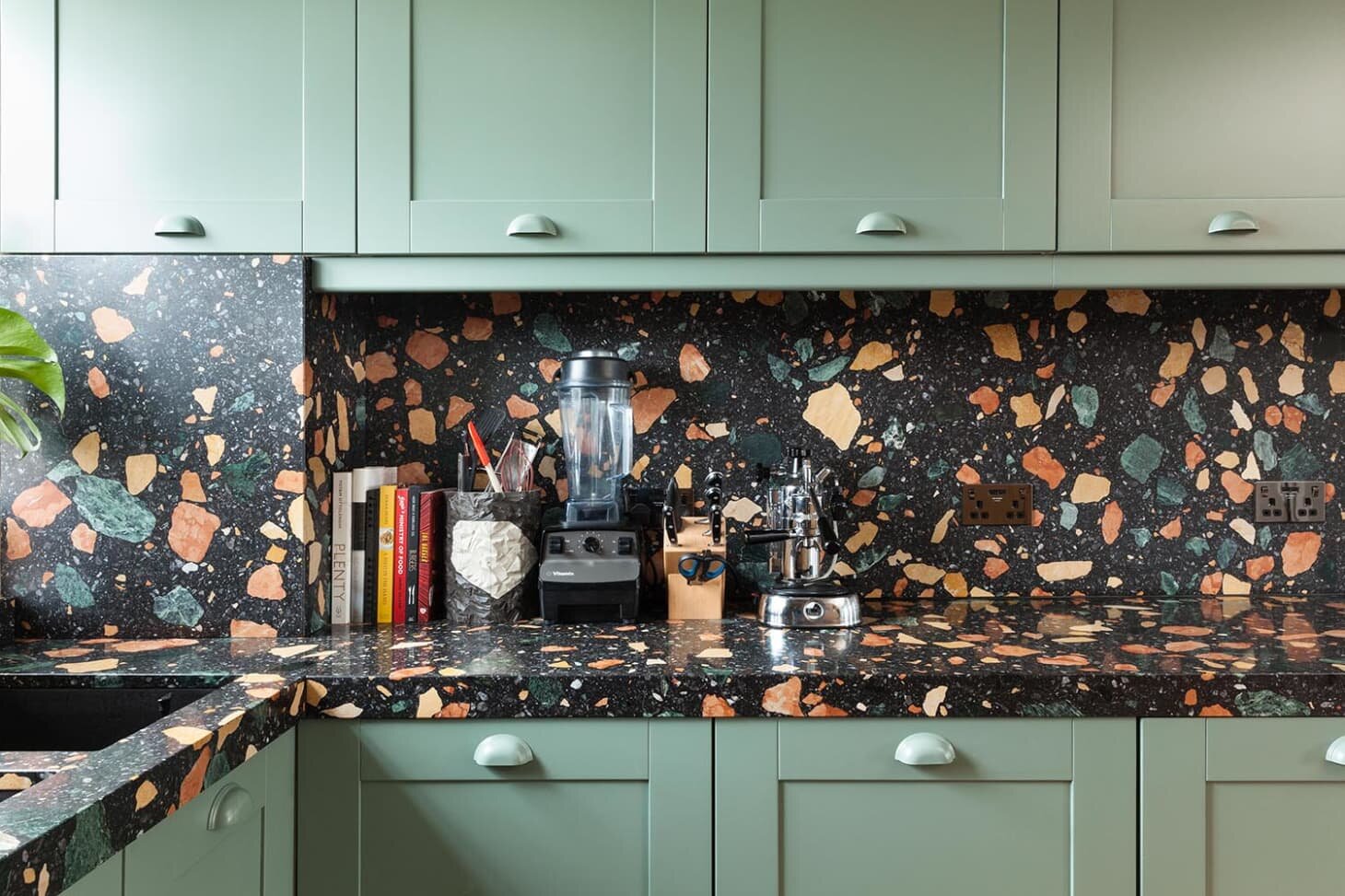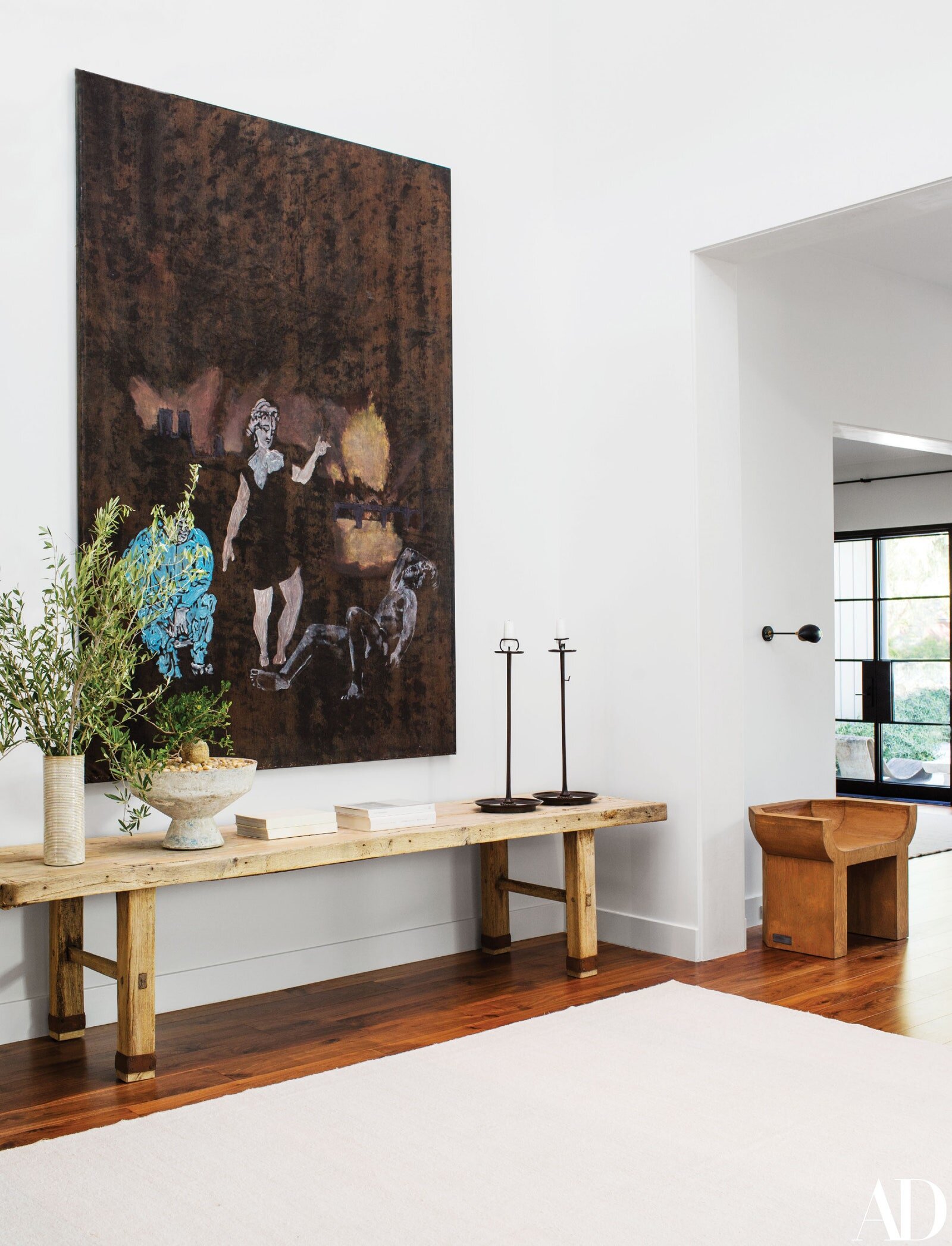In the last few years there has been a meteoric reemergence of terrazzo. This is the biggest “surface” trend since marble replaced granite as the go to stone for the home. The major distinction between terrazzo and marble is that the latter is a natural stone. Terrazzo on the other hand is a man made mosaic material which consists of embedding chips into a matrix and polishing it. The chips that are embedded in terrazzo are often comprised of materials such as marble, granite and other stones. Today, there are many other materials that are used as chips in terrazzo such as glass, onyx or even metal. For this post I will be looking at the two major waves that terrazzo has had as a trendy material, one being in the late twentieth century and the other being in current time (2018-now). It is important to note that terrazzo is a material that has been used for centuries and that this post is specifically looking at two time periods in which it has appealed to the mass consumer market.
Shiro Kuramata, Nara Table.
The first time period in which terrazzo had great mass appeal/popularity would be during the postmodern era (1980s-1990s). Specifically I will be talking about terrazzo’s prevelance in the Memphis design aesthetic/movement. This style originated from the Memphis Group, which was an Italian design and architecture group that was active from 1981-1987. The aesthetic of this style was characterized by bright colors and asymmetrical shapes. This was quite a divisive style as many criticized it for being childish and tacky. The Memphis Group had major influence during this time and it viewed as the defining style of postmodernism. The image above is of the Nara Table, created by Shiro Kuramata. This table is a prime example of how terrazzo slipped its way into the consumer market. It is important to remember that in centuries prior, terrazzo was being used as a material primarily for flooring because of its durability. Once it started being used on objects such as coffee tables, it took on a new life that started to veer away from functionality and head towards an aesthetic based material. Terrazzo was very appealing during the height of the Memphis style because of its versatility with colors. Furniture designers such as Kuramata could choose specific colors for their furniture pieces that were popular at the time in order to appeal to the masses. I believe that terrazzo had gained such popularity during the late twentieth century because of the fact that its aesthetic matched so closely with the design movement that was prevailing at that time. In addition, I believe that the color ways and designs that terrazzo was being made in during this time have defined the way that we view terrazzo today.
In the mid-late nineties terrazzo fell out of fashion as well as its parent aesthetics, Memphis and post modernism. Post modern design fell out of favor the late nineties saw the rise of farmhouse style. This new trend was characterized by a return to classic elements inspired by Europe, such as the reemergence of chinoiserie. It would not be until the late 2010’s that terrazzo gained its popularity back.
Image Credit: Dzek
Terrazzo has experienced a magnificent gain of popularity within the last few years, that I believe is due to the publics renewed interest in modern aesthetics. For most of the 2010’s, white marble dominated interior design. It was/is used in practically every part of the home from the kitchen to the bathrooms to the fireplace mantle to flooring etc. While I believe that marble is a timeless material, I do believe that in some ways it had oversaturated the market. The image above is of a kitchen that features dark, dramatic terrazzo counters and backsplash. In many ways, terrazzo is the antithesis of what white marble represented for so many years. White marble represented timelessness and versatility where as terrazzo goes against both of those sentiments; it is not traditionally timeless and it is not versatile. To choose terrazzo for your home, you must be committed to the colors that are used in its mosaic. If one chooses white marble for their kitchen counters, they can always repaint and redecorate, and the counters will adapt. Terrazzo is not a material that is easily adaptable, as its color ways are very specific.
There are many positives to having terrazzo in your home. One of the most appealing reasons to choose this material is that it is very durable. It takes a lot of ware for terrazzo to need refinishing. While terrazzo is more durable than most other materials used in homes, I believe that the majority of people that choose to include terrazzo in their homes are purely wanting it for aesthetic purposes. The image above is a perfect example of how terrazzo has gone from being a purely functional material to being one of aesthetics. In reality, most kitchens in high end homes do not need counters as resilient to damage as terrazzo. Choosing terrazzo is an aesthetic choice above durability. The one exception to this would be using terrazzo as flooring, in which case I would argue that in those cases, the terrazzo is chosen because of its durability.
Terrazzo Outdoor Throw Pillow, Target
Over the past two years terrazzo has moved from being a building material to a mass produced commodity. This is a trend that happens whenever a new stone or texture becomes popular. The best example of this would be the endless products that are produced in the white marble finish. The image above is of a mass produced pillow that can be purchased from Target. This is a great example of how obtainable terrazzo is at the moment. For those that cannot afford to install a terrazzo floor in their home, they can obtain objects such as pillows or rugs to achieve a similar look. If you are looking to experiment with terrazzo in your home I would recommend starting off with accessories such as lamps or pillows.
There is no telling how long terrazzo will remain in style, but I believe that if you truly love something you can have it forever! The key to finding forever pieces for your home is to buy things that speak to you and to buy things that you love. And who knows, maybe terrazzo will the next thing you fall in love with.





